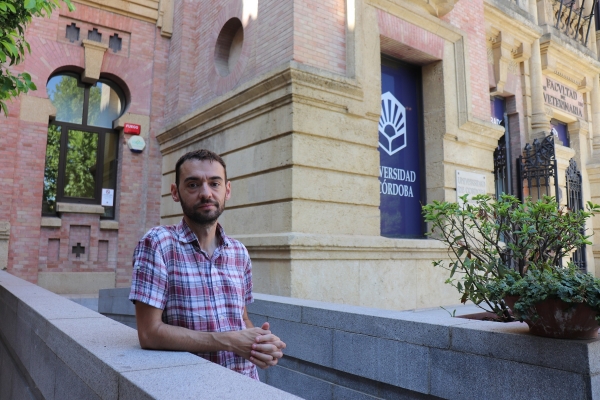Solar energy is booming. The improvement of solar technology's capacity to capture as much light as possible, convert it into energy and make it available to meet energy needs is key in the ecological transition towards a more sustainable use of energy sources.
In the process between the collection of light by the solar cell and the on-demand use of energy of, for instance, household appliances, storage plays a crucial role since the availability of solar energy has an inherent intermittency. To facilitate this storage process and deal with problems such as the environmental impact of the extraction, recycling or scarcity of some of the materials necessary for conventional batteries (such as lithium), the concept of the 'solar battery' was born. Solar batteries combine the solar cells that capture light with the storage of its energy in one single device, which then allows the energy to be used when needed.
Alberto Jiménez-Solano, a researcher at the Department of Physics of the University of Cordoba, together with a team from the Max Planck Institute for Solid State Research (Stuttgart, Germany), has carried out a study in which he has explored the design characteristics of a solar battery made from a material based on 2D carbon nitride.
"In Professor Bettina V. Lotsch's group, at the Max Planck Institute, they had managed to synthesize a material capable of absorbing light and storing that energy for later use on demand," explains Alberto Jiménez-Solano, "and it occurred to us to use it to create a solar battery".
To do this, the team first had to find a way to deposit a thin layer of that material (2D potassium carbon nitride, poly(heptazine imide), K-PHI) creating a stable structure to start manufacturing a photovoltaic device due to the fact that that material is normally in powder form or in aqueous suspensions of nanoparticles.
That previous work has now allowed them to present this solar battery design whereby, combining optical simulations and photoelectrochemical experiments, they are able to explain the characteristics of this device's high performance when capturing sunlight and storing energy.
The physical structure of the device consists of "a high-transparency glass, which has a transparent conductive coating (to allow the transport of load), and a series of layers of semi-transparent materials (with different functionalities), and another conductive glass that closes the circuit," describes the researcher. It is essentially a kind of sandwich made from various layers whose thicknesses have been studied to maximize both the level of light absorption and storage. In this case, the system they propose can absorb light on both sides since it is semi-transparent. They found that rear lighting had certain advantages; something that they managed to elucidate "by creating an initial theoretical design in accordance with the experimental restrictions" since this basic science project will not remain only on paper, but will also explore the experimental limits, coming up with feasible designs for these solar batteries.
This device would feature great versatility, since it makes it possible to both to obtain a large, one-off current (such as that needed by photography flash), and a smaller current, which could be sustained over time (such as that needed by a mobile phone).
This project demonstrates the performance of this device, made from a harmless, abundant, environmentally sustainable material (extracted from urea) which is easy to synthesize. The next steps include continuing to study its operation in various situations outside the laboratory, and adapting it to different manufacturing possibilities and needs.
Reference:
Gouder, Andreas & Yao, Liang & Wang, Yang & Podjaski, Filip & Rabinovich, Ksenia & Jiménez-Solano, Alberto & Lotsch, Bettina. (2023). Bridging the Gap between Solar Cells and Batteries: Optical Design of Bifunctional Solar Batteries Based on 2D Carbon Nitrides. Advanced Energy Materials. 13. 10.1002/aenm.202300245


